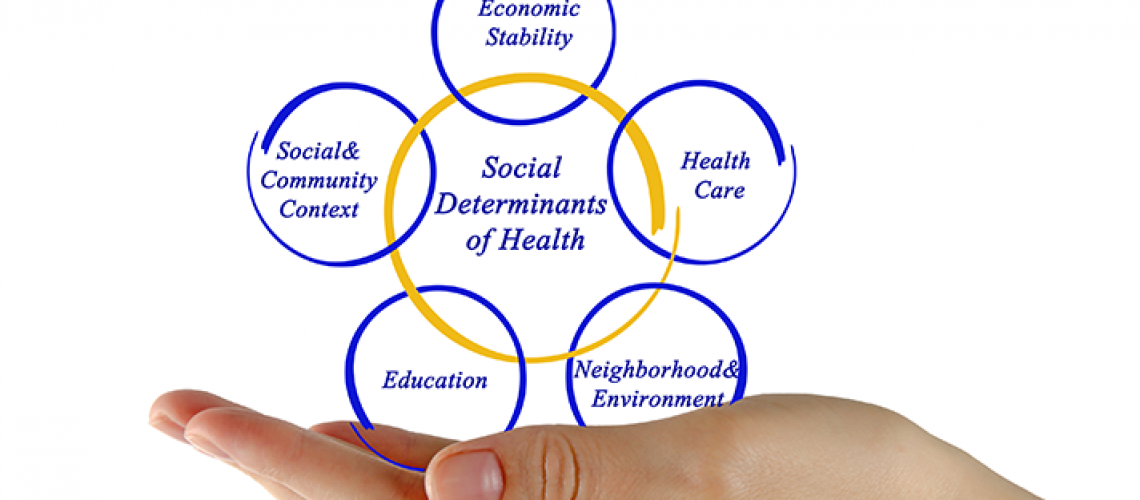In an effort to help broaden the ways in which social determinants of health can inform clinical decision making, eHealth Initiative & Foundation has recently released some new tools to promote the use of ICD-10-CM codes to capture SDOH data in the electronic health record.
WHY IT MATTERS
Specifically, the tools center around the use of ICD-10-CM Z codes.
These are designed to denote certain factors that might influence health
status, or explain reasons for medical encounters having to do with
circumstances other than a disease or injury classifiable by the rest of
the ICD-10-CM code set.
So, in the context of SDOH, use of Z codes might indicate that a “circumstance or problem is present which influences the person’s health status but is not in itself a current illness or injury,” as one ICD-10-CM explainer puts it. This could include patients with “potential health hazards related to family and personal history and certain conditions influencing health status.”
eHI’s collaborative project included payer organizations (Humana, United HealthCare), provider groups (American Hospital Association) and others who worked together to develop a more consistent approach to encouraging the use of existing ICD-10-CM codes for SDOH – and to developing new ones and promoting their adoption and use, once approved, among both providers and coders.
“Standardized screening and code capturing can reveal these upstream impacts on health and create richer data that helps physicians, care managers, social workers and home health professionals meet our members’ needs more proactively,” explained Humana Vice President of Bold Goal & Population Health Strategy Caraline Coats. “The result is better care and better health outcomes at a lower cost.”
THE LARGER TREND
Healthcare professionals increasingly appreciate the value of social
determinants of health, and the imperative to better integrate those
understandings into the care process.
But a major impediment to putting SDOH data to work toward the twin goals of healthier populations and lower costs has been a reliable, consistent and widely adopted way to document the data in the EHR.
The limited set of existing ICD-CM Z codes are a start, but they’re not enough to capture the wide variety of social determinant factors that could be impacting a person’s health status.,
“How are we capturing information about identification of people’s social care needs?” Dr. Jacob Reider, former chief medical officer at ONC and now CEO of Alliance for Better Health, explained earlier this year. “In the medical universe we had ICD and SNOMED-CT that we would use to capture information. I’m not saying we did it super well, but we had a reasonably good way of representing the fact that a patient had diabetes using a certain coding system.
“We don’t have a very good consistent, predictable, repeatable mechanism for expressing that somebody has food insecurity needs,” he added. “Or is a domestic violence victim. Or has a behavior health challenge that makes it difficult to leave the house. Or that they have transportation challenges. We don’t have good ways of representing those things.”
In the meantime, until more specific and granular codes are developed and become more ubiquitous, “using the Z codes for social determinants of health helps hospitals and health systems to better track patient needs and identify solutions to improve the health of their communities,” said Nelly Leon-Chisen, RHIA, director of coding and classification of the American Hospital Association, in a statement announcing the new eHI tools.
“The use of SDOH data from the electronic health record for clinical, operational, and research purposes can facilitate tracking, identification, and referrals to social and governmental services,” she added, explaining that “to assign ICD-10-CM codes for social determinants of health, coding professionals may use documentation from a physician or any other person authorized to document in the patient’s medical record, such as a nurse or social worker.”
ON THE RECORD
“By integrating SDOH insights into care plans, healthcare stakeholders can recognize the need for, and enable access to, additional services or interventions for patients,” said eHealth Initiative & Foundation CEO Jennifer Covich Bordenick. “ICD-10-CM Z codes can be used to record this information, directly into patient records, offering deeper insights into factors such as reliable housing, healthy food, and transportation, which also affect health.”
——————————————————
Photo courtesy of: Healthcare IT News
Originally Published On: Healthcare IT News
Follow Medical Coding Pro on Twitter: www.Twitter.com/CodingPro1
Like Us On Facebook: www.Facebook.com/MedicalCodingPro







